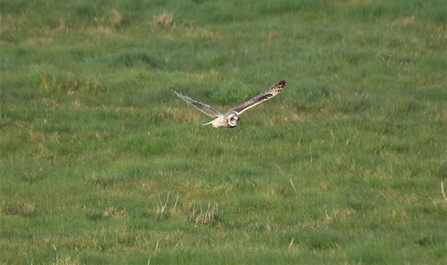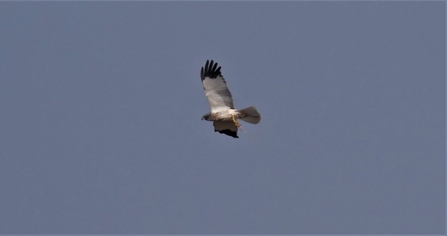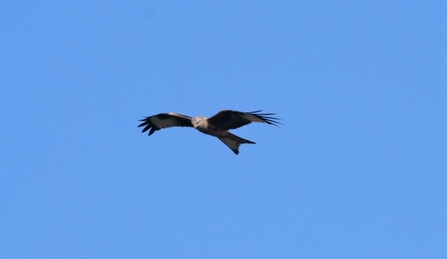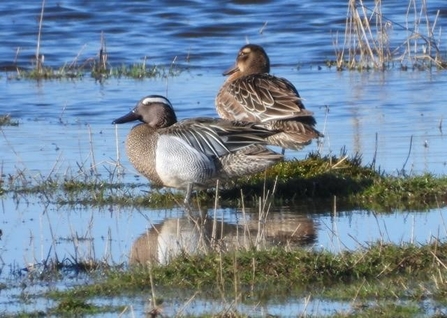The flooded Anderby Marsh has continued to draw in lots of wading birds (17 wader species) and wildfowl during March. This time last year the marsh rarely attracted more than five species of wader. Peak counts over the month were 4 shelduck, 86 gadwall, 189 teal, 453 wigeon, three pintail, five shoveler, 300 golden plover, grey plover, little ringed plover (22nd), two avocet (21st), 16 redshank, spotted redshank, 216 lapwing, 200+ dunlin, two oystercatcher, ringed plover, nine sanderling, ruff, 84 black-tailed godwit, two bar-tailed godwit, seven snipe, 65 curlew, two knot, Mediterranean gull, yellow-legged gull, four little egret, water pipit and a grey wagtail. Now that the marsh is increasing in depth as well as extent the first diving ducks are being recorded with a pair of pochard and up to four tufted duck present. It is estimated that the deepest area of the marsh is now over two foot deep!
Goosanders remained on Chapel Pit all month with numbers varying on a daily basis from 2-5 including a nice male for a couple of days. A first-winter kittiwake was an unexpected sighting here on the 21st March.
On the National Trust’s Sandilands Nature Reserve were again daily sightings of short-eared owl and also a water pipit overhead on the 3rd. The first signs of spring were evident mid-month with a plethora of bird sound from the skylarks and meadow pipits.





